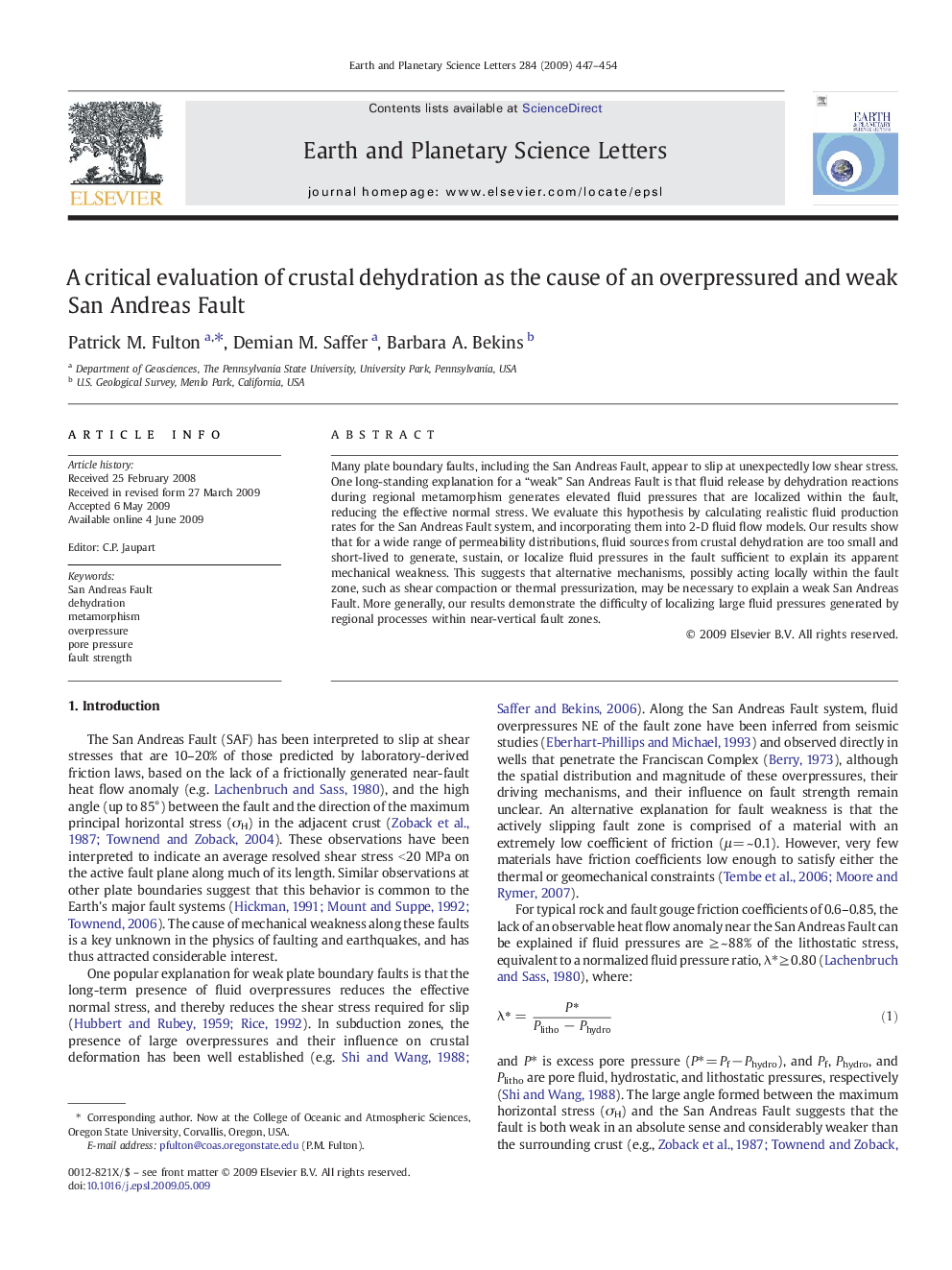| Article ID | Journal | Published Year | Pages | File Type |
|---|---|---|---|---|
| 4678997 | Earth and Planetary Science Letters | 2009 | 8 Pages |
Many plate boundary faults, including the San Andreas Fault, appear to slip at unexpectedly low shear stress. One long-standing explanation for a “weak” San Andreas Fault is that fluid release by dehydration reactions during regional metamorphism generates elevated fluid pressures that are localized within the fault, reducing the effective normal stress. We evaluate this hypothesis by calculating realistic fluid production rates for the San Andreas Fault system, and incorporating them into 2-D fluid flow models. Our results show that for a wide range of permeability distributions, fluid sources from crustal dehydration are too small and short-lived to generate, sustain, or localize fluid pressures in the fault sufficient to explain its apparent mechanical weakness. This suggests that alternative mechanisms, possibly acting locally within the fault zone, such as shear compaction or thermal pressurization, may be necessary to explain a weak San Andreas Fault. More generally, our results demonstrate the difficulty of localizing large fluid pressures generated by regional processes within near-vertical fault zones.
